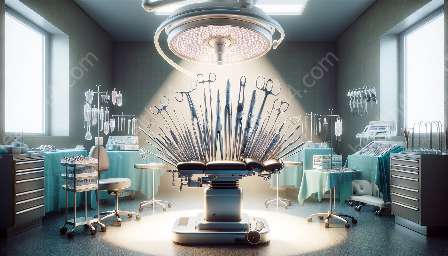Anesthesia machines are vital medical devices that deliver a controlled amount of anesthetic gases and vapors to patients during surgical procedures. These machines play a crucial role in ensuring patient safety and comfort during surgery. In this topic cluster, we will delve into the technology behind anesthesia machines, their compatibility with surgical instruments, and their role in the broader context of medical devices and equipment.
Understanding Anesthesia Machines
Anesthesia machines are complex devices that are designed to provide anesthetic gases to patients in a controlled and precise manner. These machines are equipped with a variety of components and mechanisms that work together to deliver the necessary anesthetic agents to patients undergoing surgery.
One of the key components of an anesthesia machine is the gas delivery system, which is responsible for accurately delivering a mixture of gases and vapors to the patient. These machines also include monitoring and safety features to ensure that the patient's vital signs are closely monitored throughout the procedure.
Modern anesthesia machines are equipped with advanced technology to ensure precise delivery of anesthetic agents and provide safety features such as pressure and flow alarms to alert the medical team to any potential issues during the administration of anesthesia.
Compatibility with Surgical Instruments
Anesthesia machines work in conjunction with surgical instruments to ensure that patients receive the necessary anesthesia during surgical procedures. The compatibility between these two elements is crucial for the success of any surgical operation.
During surgery, the anesthesiologist carefully monitors the patient's vital signs and administers the appropriate anesthesia to ensure that the patient remains in a controlled and comfortable state throughout the procedure. This coordination between the anesthesia machine and surgical instruments is vital for the smooth execution of surgeries across various medical specialties.
Furthermore, the compatibility between anesthesia machines and surgical instruments extends to the seamless integration of these technologies within the operating room environment. This ensures that the medical team can work efficiently and effectively to deliver the best possible care to the patient.
Role in Medical Devices and Equipment
Anesthesia machines are an essential part of the broader landscape of medical devices and equipment used in healthcare settings. These machines, along with surgical instruments and other medical devices, work together to ensure the successful and safe delivery of healthcare services to patients.
The integration of anesthesia machines with other medical devices and equipment, such as patient monitors and respiratory support systems, is crucial for providing comprehensive care to patients undergoing surgical procedures.
Additionally, the technological advancements in anesthesia machines contribute to the overall improvement of medical devices and equipment, as innovations in anesthesia technology often pave the way for advancements in other areas of healthcare technology.
Conclusion
Anesthesia machines are sophisticated medical devices that are indispensable in the realm of surgical procedures. Their compatibility with surgical instruments and their role within the broader context of medical devices and equipment underscores their importance in delivering safe and effective anesthesia to patients undergoing surgery.
Understanding the technology behind anesthesia machines and their compatibility with other medical tools is crucial for healthcare professionals and patients alike, as it ensures the seamless delivery of healthcare services across various medical specialties.


